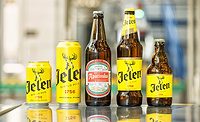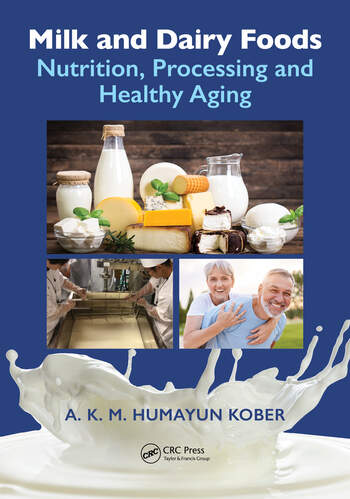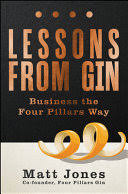Tech Update
Processors use interleavers to speed up packaging of raw bacon
Meat processors are increasingly packaging raw bacon using dedicated, high-throughput interleavers and card dispensers, which dramatically increase packaging speeds.

Trend or fad, the US bacon market is growing at an unprecedented rate.
According to National Pork Board figures compiled by Nielsen Research, the US pork bacon market has grown to about $3.3 billion a year, fueling a demand for meat processing companies that can provide a higher production volume of raw bacon for use in the food service and retail industries.
To capitalize on this demand, meat processors are increasingly turning to newer, higher speed packaging solutions that include dedicated interleavers and card dispensers that maximize throughput of raw bacon. By including automated stacking, the equipment also eliminates unnecessary labor costs while reducing the risk for injuries due to repetitive motion.
“The bottleneck [in bacon processing] is usually with the interleaving or packaging equipment,” explains Bernell Martin, President of John F. Martin & Sons, a meat processing company that supplies raw bacon to both food service and retail outlets. “So when the process needs to move faster, it usually means switching out equipment to generate that speed.”
The Need for Speed
In the production line, the interleaver operates between the slicer and the final packaging equipment, with the slicer typically capable of the highest processing rates. Although this speed imbalance is generally acceptable, there are times when a processor needs to achieve higher packing speeds to satisfy an increase in demand.
This means the interleaver or packaging equipment, whichever is slower, effectively dictates the maximum throughput speed. If these systems are older or poorly designed, they can quickly become a bottleneck. In cases like these, the options are to add more slicing lines or replace the equipment with models that run faster.
John F. Martin & Sons operates five packaging lanes, with three including dedicated interleavers for L-Boards. Previously, the maximum throughput rate was only 38 boards per minute, but due to increasing demand that needed to increase to 54 boards per minute at a minimum, says Martin.
After some research, Martin decided to install a ProLeaver Card Dispenser from Packaging Progressions, a company that specializes in the design and manufacture of automatic, high-speed interleavers, stackers and card dispensers.
Martin says the ProLeaver Card Dispenser is particularly popular among meat processors because of its high throughput speeds, which exceed the industry norm by as much as 40 percent. For retail packaging of bacon, the unit can reliably feed up to 80 cards per minute without losing time to jams, missed cards, and double feeds.
John F. Martin & Sons also sells bacon to food service operations. This requires traditional paper-feeding interleavers. Based on a sheet-weight of half a pound of raw bacon, the equipment can interleave up to 120 sheets per minute for a total of 3600 lbs. of lay-flat bacon per hour—nearly twice that of traditional systems.
To achieve these kinds of speeds and maximize uptime, Packaging Progression’s interleavers vary from standard industry offerings with features such as servo controlled product and paper synchronization; power-assisted paper unwinds; encoder enabled positioning for precise placement and jam free diverting; bacon debris filtering to prevent false paper feeds and reduce jams; paper saving draft presence sensing; jam detection logic to reduce paper jams; an automatic portion centralizer; and high speed servo controlled vertical diverters for stacking.
These design improvements essentially increase the accuracy and tracking of the items and the inserted paper or card to achieve high speeds reliably without double-feeds or paper jams.
“For paper feeders, it is critical they do not jam, which some are known to do,” says Martin. “So run speeds are important, but so is the amount of uptime. It can’t be a maintenance nightmare.”
The case for dedicated, high-speed interleavers
Interleavers are automated, high-speed machines designed to dispense sheets of paper, film or cardstock under, between or around meat, cheese and other products for portion control, inventory control and more sanitary handling. This includes greaseproof paper, parchment paper, plastic film, or bacon boards added after slicing and before final packaging.
For raw bacon used in food service operations, including restaurants, interleaved paper is often used to separate bulk portions of sliced bacon. The alternative is to pack raw bacon as individual slices side-by-side on paper in what is known throughout the industry as lay-flat packaging. In both cases, interleavers are often combined with counter/stacking modules that automatically count and stack the portions for boxing or gas flush packaging.
For raw bacon packaged for retail sale in grocery stores and other outlets, packaging typically involves the use of interleaved cards, or L-boards, which come pre-printed and branded with product and nutritional information. The process begins with the bacon being sliced and shingled in specific units of weight, followed by the L-board then being interleaved and folded over the top of the product. The final step involves vacuum-sealing the bacon in clear plastic.
—Wayne Labs
Automating Manual Processes
Despite the available automated equipment, there still are several areas where manual labor is often utilized in the bacon packaging process. By automating these steps, meat processors can reduce labor costs as much as 90 percent, eliminate repetitive motion injuries and increase throughput.
For example, when packaging bacon for retail after the L-board is inserted and folded over, the product must often be manually rotated by a worker so it enters the packaging machine at the proper orientation.
“Typically, sliced bacon is loaded onto L-boards in only one direction,” explains Martin.
“With most equipment that means someone has to manually rotate the product 90 degrees so it loads properly into the packaging machine.”
This is spurring the development of equipment solutions, including an automatic folder/turner model soon to be released by Packaging Progressions.
In many processing plants, the counting and stacking of lay-flat bacon into boxes is still performed manually as well. Once the bacon is sliced and automatically positioned on each sheet, it must be stacked perfectly straight, front to back. The process often requires several workers and is extremely taxing, both for workers and the bottom line.
Instead, automatic stackers can replace this manual step while eliminating the “bunching” often associated with “hand catch stacking.” To that end, high speed models are capable of counting and auto stacking up to 120 sheets per minute.
Customization
Whether to increase production rates or just to speed time to market, even seemingly “minor” design features or details can speed the process and reduce waste.
For example, to reduce waste interleavers can be programmed so paper or L-boards are only inserted when bacon is present. Downgrade diverters that work with most “vision” slicers can also be used to communicate with interleavers to hold off on sending paper and divert bacon scraps and other irregular slices so they are not combined with high quality cuts.
Integrated bar code scanners on the card dispenser ensure the right L-board is being dispensed so regular bacon is not being packaged as “low sodium bacon” inadvertently. This can prevent costly re-packaging and even product recalls.
According to Martin, even an established product like bacon can require an interleaver/stacking system with minor design features or customizations to work properly between slicer and packaging equipment.
“If I buy an off-the-shelf board loader from a company, I have to use it as-is,” explains Martin. “The difference with a company like Packaging Progressions is they don’t just sell a piece of equipment, they sell a solution. I can tell them, ‘Here’s my slicer and here is my packaging machine. I need you to take the product from here to here.’ And they design it.”
Packaging equipment technology trends
Processors invest a lot of time and money into getting packaging just right, so upgrading packaging equipment is generally a significant investment with a number of must-have criteria. Making that investment means committing to new or upgraded equipment for quite a while, because just like most processing equipment, you don’t expect packaging equipment to have a short lifespan.
But another thing that packaging equipment has in common with other big capital investments is that technology is speeding up the pace of change for new features and options for processors to consider.
“Probably the most common trend nowadays when it comes to new machinery is for a controls platform (PLC) that has dual Ethernet capability so the machine can use one Ethernet channel to communicate with the various drives, servos, and HMI on the machine,” says Colin Warnes, director of SEPM, ADCO. “The second Ethernet channel is then used to communicate with the plant network and their MRP software.”
Another aspect of the communications capabilities of packaging equipment is the PackML (packaging machine language) standard for controlling packaging machines as part of an automation process. Basically, PackML offers processors a universal standard for allowing packaging machinery to communicate with the control system, regardless of whether the packaging machinery speaks the same language as the controls. If both can speak PackML, they can communicate, even if they’re of different generations.
“Our engineers appreciate the structure that it provides not only for our own programs, but also when integrating with plant networks & MRP software,” says Warne.
—Casey Laughman, Editor in Chief
For more information:
Packaging Progressions, www.pacproinc.com
Looking for a reprint of this article?
From high-res PDFs to custom plaques, order your copy today!








